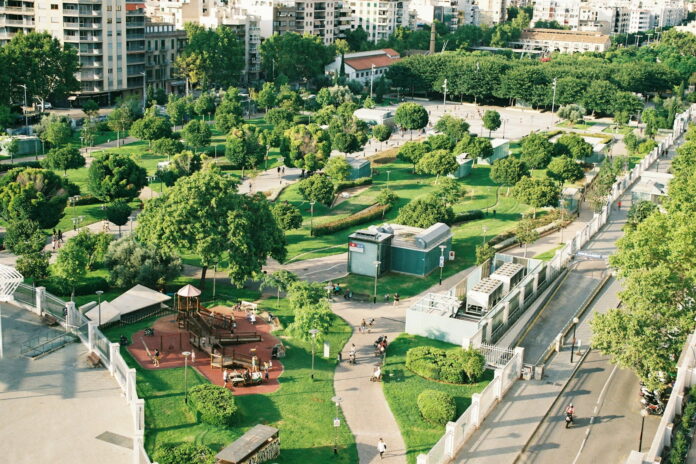In the face of rapid urbanization and the escalating challenges of climate change, sustainable urban design emerges as a critical solution for crafting cities that not only meet human needs but also respect the environment. Eco-cities, characterized by their integration of ecological principles into urban planning, represent the embodiment of this approach. They aim to reduce environmental impacts while providing a high quality of life for their residents.
Principles of Sustainable Urban Design
Sustainable urban design is guided by several core principles that collectively aim to create environmentally responsible and livable cities. The first principle is the conservation of resources, which involves minimizing the consumption of non-renewable resources and harnessing renewable ones, such as solar and wind energy. The second principle is the creation of resilient and adaptable urban environments. This means designing cities that can withstand environmental changes and disasters, thereby ensuring the long-term well-being of their inhabitants. The third principle is the integration of nature into the urban fabric, which not only enhances biodiversity but also provides essential ecosystem services, such as air and water purification.
The fourth principle emphasizes social equity and community engagement. Sustainable urban design seeks to create inclusive spaces that cater to the needs of all residents, regardless of their socioeconomic status. By involving communities in the planning process, cities can ensure that the resulting designs reflect the diverse needs and values of their populations. The fifth principle relates to promoting human health and well-being. This involves creating walkable neighborhoods, ensuring access to green spaces, and reducing pollution levels. Lastly, sustainable urban design must consider the entire life cycle of urban elements, from construction to decommissioning, ensuring that environmental impacts are minimized at every stage.
Transitioning from traditional urban development models to those based on sustainable principles requires a paradigm shift. It demands that urban planners, architects, and policymakers embrace long-term thinking, prioritize environmental stewardship, and foster collaboration across disciplines. By adhering to these principles, cities can become more than mere centers of economy and culture; they can transform into thriving ecosystems that support both human and planetary health.
Key Elements of Eco-Cities
Eco-cities embody the principles of sustainable urban design by incorporating specific elements that reduce their ecological footprint. One such element is the use of energy-efficient buildings that are designed to minimize energy consumption and reduce greenhouse gas emissions. These buildings often incorporate green roofs, solar panels, and advanced insulation techniques. Another element is sustainable transportation systems that prioritize public transit, cycling, and walking over car dependency. This shift not only reduces carbon emissions but also fosters healthier lifestyles and reduces traffic congestion.
Water conservation and management are also crucial to eco-cities. This involves the implementation of systems that capture and reuse rainwater, the establishment of water-efficient landscapes, and the use of technologies that reduce water waste. Waste reduction and recycling programs are additional components that contribute to the sustainability of eco-cities. These programs not only minimize the amount of waste sent to landfills but also encourage the efficient use of materials and the development of a circular economy. Furthermore, eco-cities often feature urban agriculture initiatives, which provide local, fresh produce, reduce the carbon footprint associated with food transportation, and strengthen community bonds.
The integration of smart technology is another key element of eco-cities. Smart grids, intelligent transportation systems, and data-driven resource management can optimize the performance of urban systems, making them more efficient and responsive to the needs of residents. Additionally, eco-cities strive to preserve and enhance biodiversity through the creation of green corridors and habitats for wildlife. This commitment to maintaining the integrity of local ecosystems ensures that urban areas contribute positively to the health of the planet. The combination of these elements within an overarching framework of sustainability enables eco-cities to serve as models for the future of urban living.
Implementing Green Infrastructure
Green infrastructure represents a transformative approach to managing city landscapes by blending natural processes with the built environment. This includes the creation of parks, greenways, and urban forests that provide recreational spaces for residents while also serving crucial ecological functions. These green spaces act as natural sponges, absorbing rainwater and reducing the risk of flooding. They also play a role in mitigating the urban heat island effect by providing shade and releasing moisture into the air through transpiration.
Stormwater management is another aspect of green infrastructure. Permeable pavements, bioswales, and rain gardens are designed to capture and filter rainwater, preventing runoff and protecting water quality. These systems work in concert with traditional infrastructure to provide a more resilient and sustainable approach to urban water management. Green roofs and walls are also part of this approach, offering insulation for buildings, creating habitats for wildlife, and beautifying the urban landscape.
The implementation of green infrastructure requires careful planning and collaboration between urban planners, engineers, ecologists, and the community. It often necessitates innovative funding mechanisms and policy incentives to encourage the integration of green elements into public and private developments. Education and outreach are also critical to ensure that residents understand the benefits of green infrastructure and participate in its upkeep. By prioritizing green infrastructure, cities can improve the quality of life for their inhabitants, enhance biodiversity, and move towards a more sustainable and resilient future.
The journey towards crafting eco-cities through sustainable urban design is an ongoing and evolutionary process. By embracing the principles of sustainable urban design, incorporating the key elements of eco-cities, and implementing green infrastructure, urban areas can become more than dense clusters of concrete and steel. They can evolve into vibrant, healthy, and sustainable ecosystems that support the well-being of their residents and the planet. As we look to the future, the collective efforts of designers, policymakers, and communities will be crucial in transforming the vision of eco-cities into a reality, paving the way for a more sustainable and equitable world.
